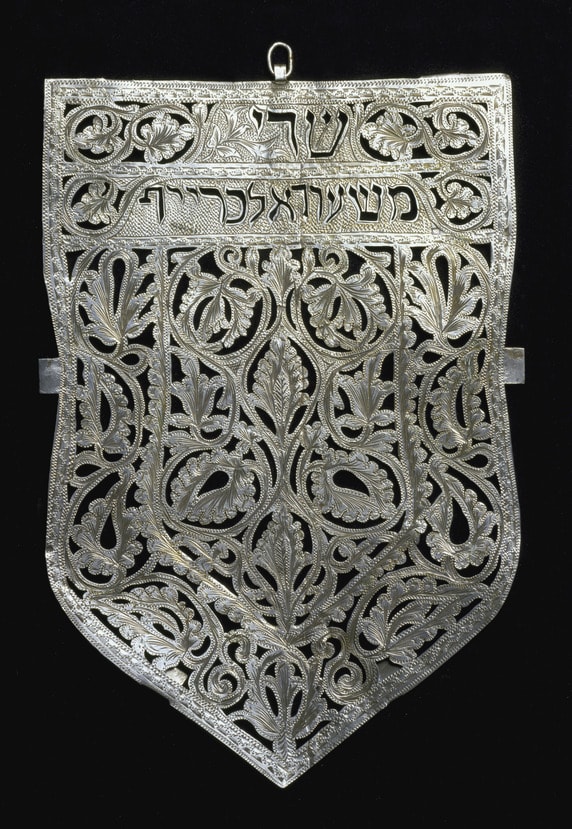
- Object Name:
- Mezuzah Cover
- Title:
- Mezuzah Cover of Mas'uda Lakhriyef
- Place Made:
- Morocco
- Date:
- 20th century
- Medium:
- Silver: engraved and pierced
- Dimensions:
- 10 1/4 × 7 in. (26 × 17.8 cm)
- Credit Line:
- Purchase: Judaica Acquisitions Fund
- Accession Number:
- 1997-170
Not On View
The Bible mandates that passages from Deuteronomy inscribed on a parchment scroll be hung on the doorposts of Jewish homes and Jewish-owned buildings. Surviving medieval Jewish homes in the kingdom of Aragon, Spain, still have small cavities carved out of the stone doorpost. The parchment was placed inside and covered by a protective device. None of these coverings survives from Spain, but the same form of mezuzah was used in Morocco by those Jews who descended from Iberian refugees, and late examples of their covers survive.
This example was used to cover the parchment in a door niche in Morocco in the home of Mas'uda Lakhriyef, whose name is cut out below the name Almighty in the top section. The remaining decoration is composed of arabesques of flowering vines that are enhanced by engraved details and set against cutout voids. Fitted with a (now missing) deeply colored textile on its underside, the mezuzah cover would have been greatly enhanced in its aesthetic affect, which was similar to that of contemporaneous prayer-shawl bags and ajouré Hanukkah lamps from workshops in Meknes.
This example was used to cover the parchment in a door niche in Morocco in the home of Mas'uda Lakhriyef, whose name is cut out below the name Almighty in the top section. The remaining decoration is composed of arabesques of flowering vines that are enhanced by engraved details and set against cutout voids. Fitted with a (now missing) deeply colored textile on its underside, the mezuzah cover would have been greatly enhanced in its aesthetic affect, which was similar to that of contemporaneous prayer-shawl bags and ajouré Hanukkah lamps from workshops in Meknes.
Information may change as a result of ongoing research.